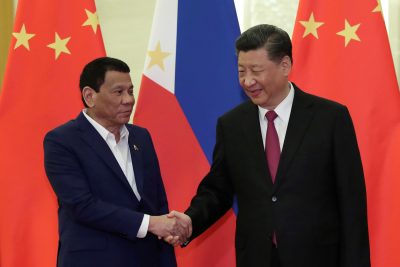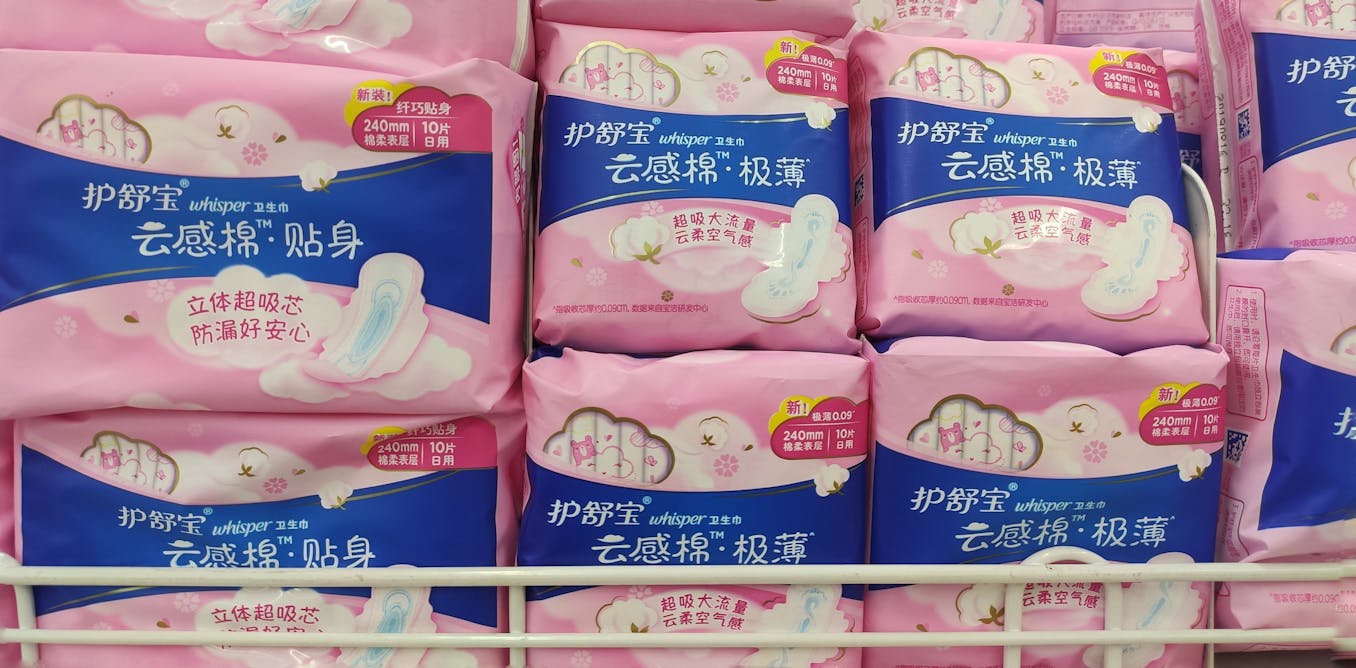China
Philippine elections expose the politics of China policy

Author: Editorial Board, ANU
When, how, and why do domestic politics shape Southeast Asian states’ relationships with China?
This is almost a trick question — not only the diversity of Southeast Asian political systems, but the multiplicity of interests that bear upon foreign policy within individual states makes mockery of the idea of ‘domestic politics’ as a single, coherent force.
A more manageable question might be: to what extent does public opinion set the terms on which Southeast Asian governments work with China?
If only it were easy to know exactly what Southeast Asian publics think about China. And then to know what influences their thinking. In Japan or Australia where the public is regularly interrogated on these questions, public opinion is hardly unfiltered from state and other interests.
In Southeast Asia, the ISEAS-Yusof Ishak Institute’s State of Southeast Asia survey is an invaluable snapshot of elite opinion, but isn’t necessarily an accurate barometer of the ordinary citizen’s views, filtered or otherwise. While pollsters in the major electoral democracies of Indonesia and the Philippines occasionally take the temperature of voters on China, across the region polls are too infrequent, and methodologies too inconsistent, to be able to make generalisations about region-wide trends in public opinion.
As politicians disingenuously say, the only poll that matters is an election. Indeed, the best clues to how the public’s views shape the behaviour of national governments is via a close look at how China becomes an issue in election campaigns.
As Richard J Heydarian makes clear in this week’s lead article, all the ingredients for the politicisation of the China relationship are present in the Philippines’ elections coming up in May 2022. Since the election of the populist Rodrigo Duterte in 2016, ‘bilateral relations between China and the Philippines, a United States treaty ally, have undergone a tremendous transformation’. While going through the motions of amplifying public outrage over Chinese actions in the South China Sea, the Duterte administration has made soliciting Chinese investment in infrastructure and industrial development the focus.
Yet actual follow-through on projects to which Chinese lenders have pledged support has been underwhelming, and China continues to push the envelope in the South China Sea. Duterte’s critics accuse him of having cosied up to Beijing with little to show for it either on the South China Sea dispute or bringing economic transformation to the Philippines.
The criticism seems to have registered with the outgoing president. Now, ‘in his twilight months in office’, Duterte ‘has adopted a dramatically divergent tone on China’ as a majority of the contestants running to replace him distance themselves from the administration’s China policy. Only the current frontrunner Ferdinand ‘Bongbong’ Marcos Jr promises continuity with Duterte’s conciliatory approach; other candidates are promising a return to hedging, or to the pro-Western stances associated with the Philippine military establishment.
Duterte and his administration might have been defying political gravity in seeking close economic ties with Beijing while leaving the South China Sea issue unresolved, emboldened by the stratospheric approval ratings for Duterte and his brutal but popular drug war. As the country looks beyond Duterte’s ‘penal populism’, and to a more conventional president drawn from the Manila-based oligarchy, the politics of foreign policy might be reverting to the historical mean. ‘In the Philippines’ boisterous democracy’, Heydarian writes, ‘public opinion and the sentiments of the military reign supreme. Whoever succeeds Duterte will come under tremendous pressure to adopt calibrated assertiveness with respect to the South China Sea disputes, but also a measure of geopolitical pragmatism in relations with China’.
It’s a stretch to generalise from the Philippines to the rest of Southeast Asia. The Philippines is a US treaty ally, and there is ample public goodwill there towards the United States. The electoral system allows for a diverse field of presidential candidates who can win with a plurality of the vote. Elections are famously competitive, with candidates more incentivised to pander to public opinion rather than respect elite consensus on foreign policy.
More fundamentally, there are genuine and abiding differences within the political elite on how to balance the economic opportunities and security risks of China’s…
Business
China Dismantles Prominent Uyghur Business Landmark in Xinjiang – Shia Waves

The Chinese government demolished the Rebiya Kadeer Trade Center in Xinjiang, affecting Uyghur culture and commerce, prompting criticism from activists amid concerns over cultural erasure and human rights violations.
Demolition of a Cultural Landmark
The Chinese government recently demolished the Rebiya Kadeer Trade Center in Urumqi, Xinjiang, a vital hub for Uyghur culture and commerce, as reported by VOA. This center, once inhabited by more than 800 predominantly Uyghur-owned businesses, has been deserted since 2009. Authorities forcibly ordered local business owners to vacate the premises before proceeding with the demolition, which took place without any public notice.
Condemnation from Activists
Uyghur rights activists have condemned this demolition, perceiving it as part of China’s broader strategy to undermine Uyghur identity and heritage. The event has sparked heightened international concern regarding China’s policies in Xinjiang, which have been characterized by allegations of mass detentions and cultural suppression, prompting claims of crimes against humanity.
Rebiya Kadeer’s Response
Rebiya Kadeer, the center’s namesake and a notable Uyghur rights advocate, criticized the demolition as a deliberate attempt to erase her legacy. Kadeer, who has been living in exile in the U.S. since her release from imprisonment in 2005, continues to advocate for Uyghur rights. She has expressed that her family members have suffered persecution due to her activism, while the Chinese government has yet to comment on the legal ramifications of the demolition.
Source : China Demolishes Uyghur Business Landmark in Xinjiang – Shia Waves
China
China Expands Nationwide Private Pension Scheme After Two-Year Pilot Program

China’s private pension scheme, previously piloted in 36 cities, will roll out nationwide on December 15, 2024, enabling workers to open tax-deferred accounts. The initiative aims to enhance retirement savings, address aging population challenges, and stimulate financial sector growth.
After a two-year pilot program, China has officially expanded its private pension scheme nationwide. Starting December 15, 2024, workers covered by urban employee basic pension insurance or urban-rural resident basic pension insurance across the country can participate in this supplementary pension scheme. This nationwide rollout represents a significant milestone in China’s efforts to build a comprehensive pension system, addressing the challenges of a rapidly aging population.
On December 12, 2024, the Ministry of Human Resources and Social Security, together with four other departments including the Ministry of Finance, the State Taxation Administration, the Financial Regulatory Administration, and the China Securities Regulatory Commission, announced the nationwide implementation of China’s private pension scheme effective December 15, 2024. The initiative extends eligibility to all workers enrolled in urban employee basic pension insurance or urban-rural resident basic pension insurance.
A notable development is the expansion of tax incentives for private pensions, previously limited to pilot cities, to a national scale. Participants can now enjoy these benefits across China, with government agencies collaborating to ensure seamless implementation and to encourage broad participation through these enhanced incentives.
China first introduced its private pension scheme in November 2022 as a pilot program covering 36 cities and regions, including major hubs like Beijing, Shanghai, Guangzhou, Xi’an, and Chengdu. Under the program, individuals were allowed to open tax-deferred private pension accounts, contributing up to RMB 12,000 (approximately $1,654) annually to invest in a range of retirement products such as bank deposits, mutual funds, commercial pension insurance, and wealth management products.
Read more about China’s private pension pilot program launched two years ago: China Officially Launches New Private Pension Scheme – Who Can Take Part?
The nationwide implementation underscores the Chinese government’s commitment to addressing demographic challenges and promoting economic resilience. By providing tax advantages and expanding access, the scheme aims to incentivize long-term savings and foster greater participation in personal retirement planning.
The reform is expected to catalyze growth in China’s financial and insurance sectors while offering individuals a reliable mechanism to enhance their retirement security.
| This article was first published by China Briefing , which is produced by Dezan Shira & Associates. The firm assists foreign investors throughout Asia from offices across the world, including in in China, Hong Kong, Vietnam, Singapore, and India . Readers may write to info@dezshira.com for more support. |
Read the rest of the original article.
China
How a scandal over sanitary pads is shaping feminist activism in China

Chinese sanitary pad brands face scandal over misleading product quality and pH levels. Consumer outrage grows amid larger issues of women’s health neglect and activism for better standards linked to declining fertility rates.
A string of prominent sanitary pad brands in China have become embroiled in a scandal about the quality of their products. The controversy began in early November when consumers complained that that the advertised lengths of many sanitary pads were misleading.
Then, a few days later, customers discovered that many pads had pH levels similar to textiles such as curtains and tablecloths that do not come into frequent contact with skin, potentially causing irritation or harm to users.
The anger only intensified when ABC, one of the companies at the centre of the controversy, responded dismissively to concerned consumers. ABC emphasised that it was complying with national standards, and reportedly replied to a complaint with: “If you cannot accept it, then you can choose not to buy it”.
Chinese companies have since apologised for their sub-par products, and ABC has even said that it was “deeply sorry” for its “inappropriate” response. But for many women in China, this scandal is about more than just defective products. It is part of a troubling pattern in which women’s health and dignity is blatantly disregarded.
In 2022, Chinese women took to social media to advocate for sanitary pads to be sold on trains. Their demands were swiftly dismissed, with China Railway saying sanitary pads were “private items” that women should prepare for themselves in advance.
Some people on the internet echoed this sentiment, arguing that it was inappropriate and unhygienic to sell sanitary pads on trains. “You don’t want sanitary pads sold alongside food, do you?”, one wrote.
Remarks like this laid bare not only the stigma surrounding menstrual blood in China, where it is seen as polluting and shameful, but also the widespread ignorance among men about menstruation. This was again highlighted by one social media user who questioned absurdly: “Why can’t women just hold it in?” The recent scandal over poor quality sanitary pads is yet another chapter in this story.
The neglect of women’s basic needs in China has worsened with the government’s push for higher birth rates. China’s ruling Communist party began actively promoting higher birth rates in the mid-2010s after decades of limiting most families to one child. The push is driven primarily by the state’s concerns over an ageing population and a shrinking labour force.
This pro-natalist agenda, which has been bolstered by media campaigns urging women to prioritise marriage and motherhood, has pressured many to sacrifice their education and careers. In anticipation of having to provide paid maternity leave, employers also often discriminate in the processes of hiring and promotions.
Meanwhile, feminist advocacy faces censorship and suppression. This has included the shutdown of influential media platforms like Feminist Voices and the blocking of #MeToo-related hashtags. Activists have resorted to creative methods, such as using symbols like the “Rice Bunny” (a term that is pronounced “mi tu” in Chinese) emoji, to navigate strict surveillance and content filtering that targets discussions on gender equality.
Why the #RiceBunny hashtag has become China’s #MeToo.
Fighting for change
Women in China are now rallying for higher standards in the production and regulation of sanitary products. They are actively submitting comments via the government’s online platform for the public to provide feedback to standard setting officials.
On November 22, a representative from the organisation responsible for drafting the new standards stated that public feedback had been heard and will be considered in the process. However, this response is far from satisfactory. The same companies that produce sanitary pads in China are heavily involved in setting these standards.
Women’s active involvement in shaping the revision of national standards is reflective of a consistent strategy in which they use government-provided channels for political participation. Yet women in China have now also started to link the issue of low-quality sanitary products to broader societal challenges, including falling fertility rates.
In the 1970s, when China first implemented its one-child policy, over six children were born for every woman of childbearing age. This had dropped to an average of one-and-a-half by the 2000s. At the same time, there is a growing prevalence of infertility in China. A 2021 study published in The Lancet, a peer-reviewed medical journal, shows that China’s infertility rate rose from 12% in 2007 to 18% in 2020. One in every 5.6 Chinese couples of childbearing age faces challenges in conceiving a baby.
Throughout the recent sanitary pad scandal, hashtags such as #LowQualitySanitaryPadsCauseFemaleIntertility have spread across Chinese social media platforms such as Weibo. By aligning their grievances with national anxieties, feminist activists in China are strategically reframing their demands to align with state priorities.
Such an approach may, on the one hand, risk unintentionally reinforcing existing stereotypes about women and societal expectations. But it may also increase the likelihood of their concerns being addressed, as it presents better sanitary product standards as a critical public health and national concern rather than a “women’s issue” that can simply be dismissed.
Feminist activism in China looks to be growing in maturity. Narratives and strategies are now being carefully crafted to ensure maximum impact both in public and policy arenas.
This article is republished from The Conversation under a Creative Commons license. Read the original article.






